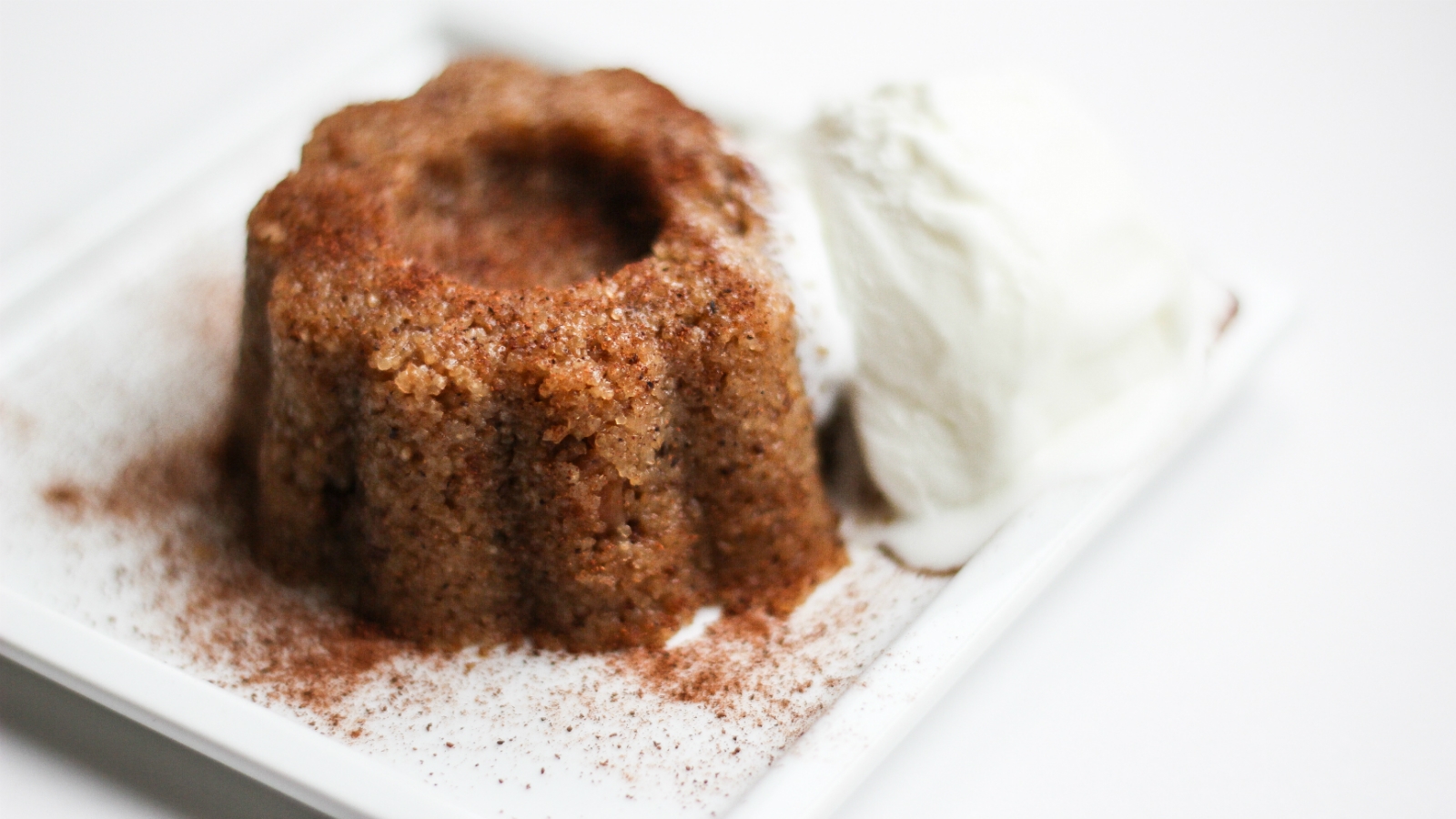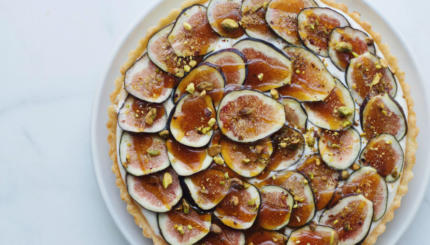Greek Halvah
Semolina pudding.
While it is disputed where it originated over 3000 years ago–some say India, others Turkey, others say it was definitely Byzantine–there is no doubt that halvah is one of the most common desserts in the world. The flaky, dense, tahini-based candy known to American and Israeli Jews is only one of hundreds of different types of halvah eaten across the globe.Halvah (also known as halwa, halva, halava, helva, etc.) is a broad term used to describe desserts made with a base of flour or nut butter, such as sesame tahini, and sometimes including vegetables (such as carrots) or nuts. It is eaten in India, Central and West Asia, North Africa, the Balkans, and of course, in Israel and in Jewish delis throughout the United States. Each culture has its own halvah, united only by name–which derives from the Arabic word for “sweet”–and the fact that each is a sweetened candy or dessert, often an ancient and beloved recipe.
A trip to Israel is not complete without sampling the country’s halvah. Taking a stroll in Jerusalem’s Machane market you can’t miss the halvah merchants, their tables piled high with huge slabs of the treat in a multitude of flavors, filled with different nuts and seeds, colored and flavored with various extracts. And because the dessert is pareve–neither meat nor dairy–it has always been the perfect deli dessert. Many American Jews grew up on Joyva Halvah; Joyva brought the ancient treat to the United States in 1907, and more than a century later, production continues.
Below are three diverse halvah recipes: Israeli Tahini Halvah, Indian Carrot-Cardamom Halvah, and Greek Semolina Halvah. The only special tool needed is a candy or instant-read thermometer, for the Israeli halvah. Otherwise, these recipes are very simple to make–any recipe that has survived 3000 years should be! Each of these recipes can handle many variations. You can substitute different nuts or dried fruit, or add extracts, such as coffee, coconut, and vanilla. They will also keep very well, so they are great for making ahead and keeping on hand for last-minute guests.
This pudding recipe is basically a sweetened cream of wheat–in a fancy, firm mold. Make sure to use the amount of oil indicated, otherwise the semolina will be dry and it won’t hold together. Be careful not to let the semolina burn–toast it just to a beautiful golden brown. With some patience, you’ll have incredibly complex flavor and a satisfying treat.
Ingredients
1 cup olive oil
2 cups semolina flour
2 cups sugar
pinch salt
1/2 teaspoon cinnamon
1/2 cup toasted pistachio nuts, roughly chopped
4 cups hot water
Directions
Heat the olive oil in a medium saucepan. Add the semolina and cook on medium-high heat, stirring frequently, for about 5 minutes, or until fragrant and starting to color.
Add the sugar, salt, cinnamon, and nuts and continue stirring. Cook until the mixture darkens, for about 10-15 minutes, but do not let it burn.
Turn the heat to low and carefully add the hot water–the mixture will bubble and steam rapidly. Cover the pot to prevent splattering (and to avoid burning yourself), and when the steam has subsided, remove the lid and stir until the mixture is thick and pulls away from the sides of the pan.
Spoon into a bundt pan, or into individual bowls or ramekins. Once cool, it should feel like firm jello. To unmold, turn over pan onto a plate when cool. These halvah cakes will keep for up to 4 days at room temperature in an airtight container. Wipe up any excess oil before serving.



